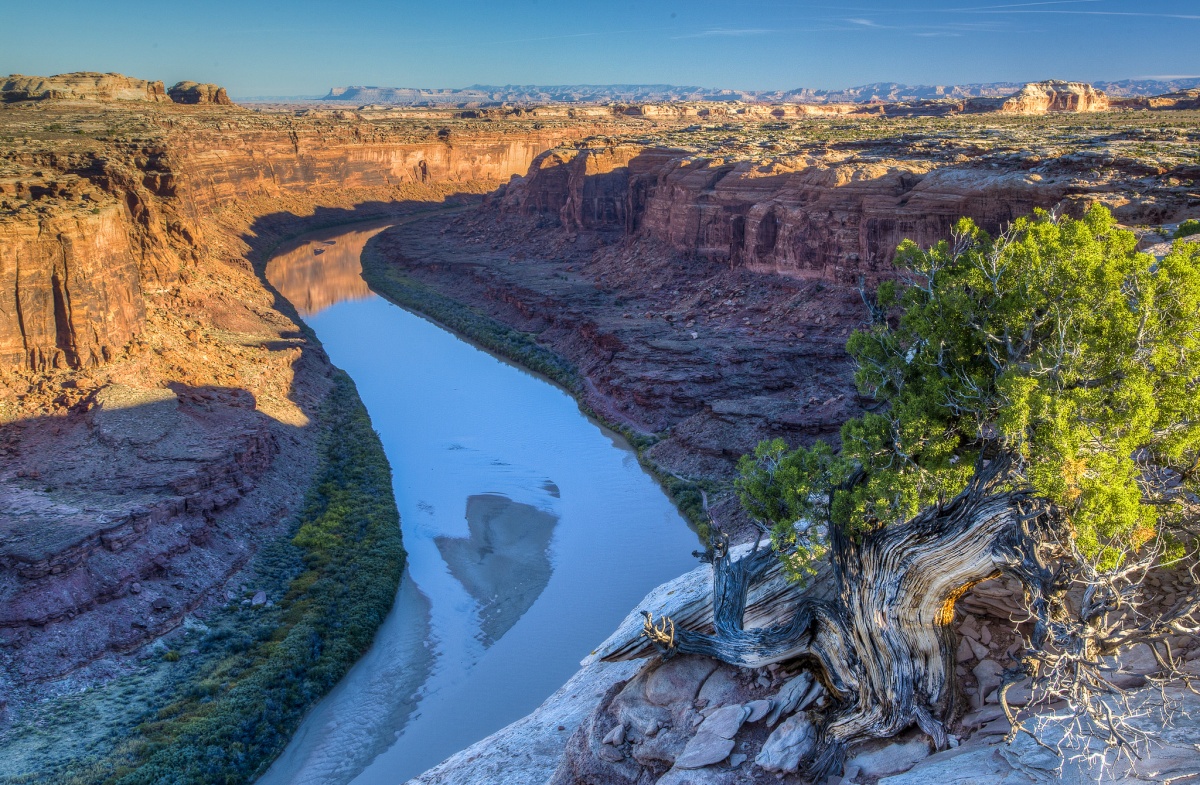The Bureau of Land Management is currently working on an update to its travel management plan for the Labyrinth Canyon/Gemini Bridges area. Grand County is a cooperating agency with the BLM, and has the opportunity for weighted input in the planning process. At its regular meeting on May 18, the Grand County Commission unanimously approved a letter to the BLM offering comments on the plan. The letter emphasizes balance between user groups, careful planning, and resource protection.
The plan will guide the management of roads and trails and whether they are open to motorized use in an approximately 304,000 acre area northwest of Moab. According to a March 23 BLM press release on the plan update, there are 1,232 miles of inventoried routes within those boundaries.
In 2008 the Southern Utah Wilderness Alliance brought a lawsuit against the BLM regarding a resource management plan in the Richfield area, claiming the agency had not correctly applied required federal standards when designating motorized routes. A settlement between the parties reached in 2017 stipulated that the BLM would review thirteen travel management plans for various areas in Utah, including the San Rafael Desert, for which the agency updated its plan in 2020 [See “San Rafael Desert plan maximizes OHV access,” Sept. 3 edition. -ed.]. A review of the Labyrinth Canyon/Gemini Bridges area travel management plan is also included in the settlement.
On its website, SUWA describes the current Labyrinth Canyon/Gemini Bridges travel plan as “prioritizing motorized recreation at the expense of all other public land uses,” and calls for motorized trails to be banned from wildlife habitat, cultural sites, and other sensitive areas within the plan’s boundaries.
In its approved letter, the Grand County Commission suggested a “zoning” approach to the area, allowing different types of use in different areas to ensure that both motorized users and seekers of peace and quiet are accommodated.
“We think the top priority for the future travel plan is to make sure that there is a fair allocation of recreational opportunities amongst various groups, even as use numbers increase,” it reads, describing the current use system as lacking in organization and purpose.
The letter goes on to ask that 15% of the area be more than a mile from any motorized route, and 30% of it be more than half a mile from a motorized route.
Several Grand County residents called in to the Zoom meeting to offer support for the letter. One woman recounted spending time in the area and meeting lost motorcyclists next to the river far from any roads. She advocated a more organized, planned system with maps, signs and directions.
Other commenters emphasized that the area is habitat for desert bighorn sheep, a species important to the Utah Division of Wildlife Resources.
Another recreator remembered driving out to the area five and ten years ago and experiencing solitude and wonder.
“It was quiet, you were alone and you were discovering stuff,” he said. He appreciated being able to access the area by truck, but acknowledged that in recent years the once lonely roads are getting crowded and loud, and so he supports designating more roadless areas in the Labyrinth Canyon/Gemini Bridges area.
“Let’s have areas where you can still enjoy peace and quiet in nature,” he said.
Meanwhile, off-road advocates have been paying attention to the planning process as well. During a public comment period from March 24 through April 26, off-road groups published articles urging their followers to submit comments in support of keeping motorized access. Ben Burr, policy director for the off-road advocacy group BlueRibbon Coalition, created a video offering guidance for drafting comments on the planning process. He advised motorized users familiar with the area to check the BLM’s maps and ensure no existing trails were left out of the agency’s inventory. Burr pointed out that the travel plan update could end up being a boon to the motorized community: he pointed to the San Rafael Desert travel management plan, which opened up hundreds more miles of motorized trails in the updated version of the plan compared to the previous version.
“It’s not unreasonable for us to believe they should have opened up more,” Burr added. He noted that a parcel across the river from the Labyrinth Canyon / Gemini Bridges area was recently designated as wilderness, establishing tight use restrictions. Those increased regulations in an adjacent area, he argued, should bolster motorized users’ claims that the Labyrinth Canyon/Gemini Bridges area should maintain ample motorized access.




